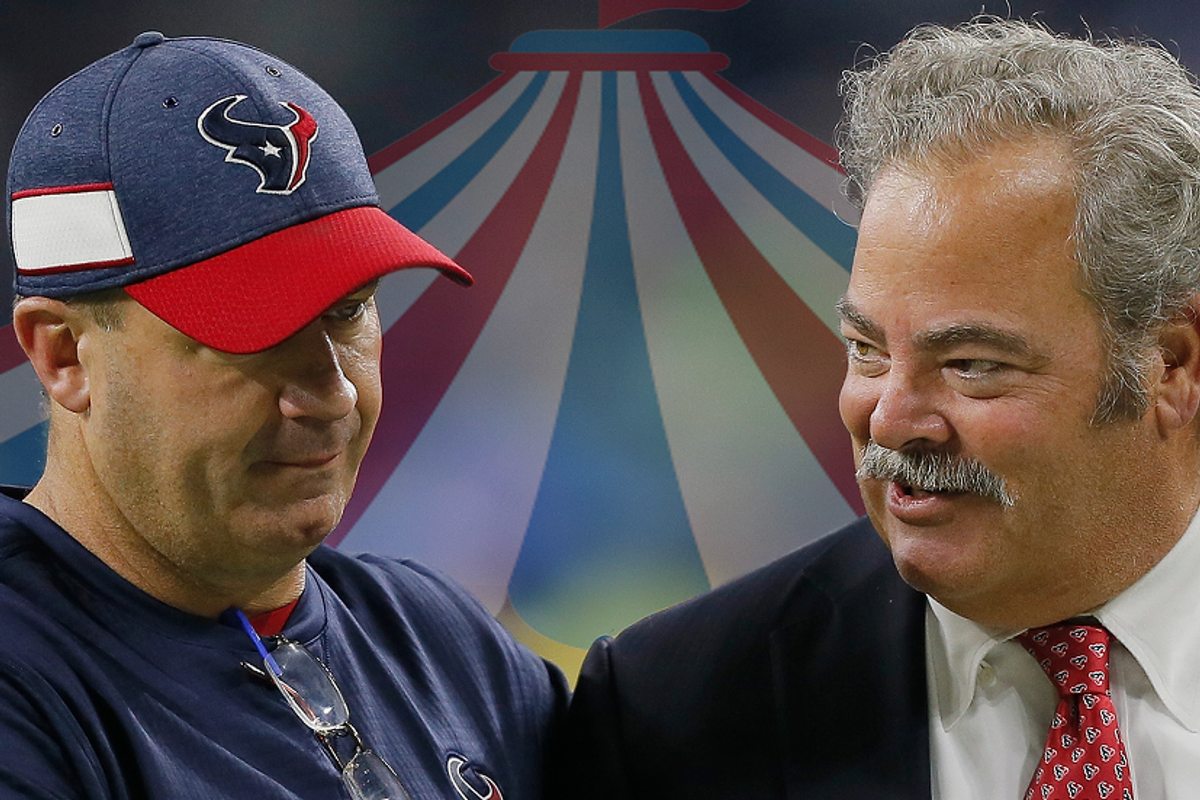Falcon Points
Texans keep trying to erase mistakes, but at what cost?
Sep 11, 2019, 6:55 am
Falcon Points

The Texans released cornerback Aaron Colvin on Tuesday, a night after his embarrassing performance against the Saints. Colvin signed as a free agent last season and proved to be a disaster. He was given $18 million at signing, of which the Texans will still have to eat 7.5 million this year.
Signing Colvin did not work out. At least the Texans ejected, and signed free agent Phillip Gaines, who might be an upgrade. Then again, anything would be an upgrade.
Bill O'Brien the GM continues to try to erase mistakes at high costs. And probably making more along the way.
Colvin was clearly a mess, and cutting him probably was a must. It was once again admitting a big mistake. In the last month, they have cut running back D'Onta Foreman, a third round mistake. They traded Martinas Rankin, a third round mistake. They IR'd tight end Kahale Warring, who looks like...you guessed it, a third-round mistake. All they got in return was veteran RB Carlos Hyde, who at least looked good against the Saints. But the assets they have punted on are adding up.
It all began in 2017 when the Texans traded tackle Duane Brown to Seattle for next to nothing. They have been trying to fix left tackle ever since. That led to paying a premium for Laremy Tunsil. When Foreman was cut, they had to pay a premium for Duke Johnson. While those moves might not be bad in the long run, they sacrificed draft picks to try to correct mistakes.
They likely find themselves having made more recent miscues that will have to be corrected. The Colvin signing cost them money and a possibly the game against the Saints. But that was an easy erasure. The problem was not addressing the corner position effectively in free agency and the draft. They used a high pick on corner Lonnie Johnson, who only played special teams Monday night. While he might eventually work out, the fact that they thought Colvin was a better option...
And they have now invested five premium picks - three firsts and two seconds - on the offensive line. Only Tunsil started Monday night.
They traded Jadeveon Clowney for nothing, weakening their defense, when they could have kept him another year. That is a mistake they will have to clean up next. Then on Tuesday they paid Nick Martin - a below average center - like a Pro Bowler. Don't be surprised if they Colvin that one in a year or two. They could have easily used the Martin money on Clowney. Instead they double down on less than ediocrity.
Deshaun Watson covers a lot of mistakes. But at some point, the Texans have to stop making them, and start making good calls. Maybe Bradley Roby works out. Maybe Johnson improves and is a factor by season's end. Maybe Titus Howard and Max Sharping become quality OL starters before the year is out. Those are realistic possibilities.
But what if they are mistakes, too? Watson can only carry them so far. As Bill O'Brien has become the be all, end all, he has erased past errors. Most of them are his own. So can his current moves be trusted?
I have mentioned this before, but this is very much like Chip Kelly's tenure in Philadelphia, when he took over personnel and made one misstep after another. At least when he was fired, they got a real GM and head coach and won a Super Bowl.
Watson should carry them to a winning season and a possible playoff berth, but if not, the mistakes will only be more glaring. And if O'Brien keeps making them? More of Watson's prime will be wasted.
O'Brien keeps making moves and trying to eliminate his missteps. And owner Cal McNair is giving him free reign. But are they making even more mistakes in the process?
We will find out soon enough.
Oswald Peraza hit a two-run single in the ninth inning to help the Los Angeles Angels snap a three-game losing skid by beating the Houston Astros 4-1 on Saturday night.
Peraza entered the game as a defensive replacement in the seventh inning and hit a bases-loaded fly ball to deep right field that eluded the outstretched glove of Cam Smith. It was the fourth straight hit off Astros closer Bryan Abreu (3-4), who had not allowed a run in his previous 12 appearances.
The Angels third run of the ninth inning scored when Mike Trout walked with the bases loaded.
Kyle Hendricks allowed one run while scattering seven hits over six innings. He held the Astros to 1 for 8 with runners in scoring position, the one hit coming on Jesús Sánchez’s third-inning infield single that scored Jeremy Peña.
Reid Detmers worked around a leadoff walk to keep the Astros scoreless in the seventh, and José Fermin (3-2) retired the side in order in the eighth before Kenley Jansen worked a scoreless ninth to earn his 24th save.
Houston’s Spencer Arrighetti struck out a season-high eight batters over 6 1/3 innings. The only hit he allowed was Zach Neto’s third-inning solo home run.
Yordan Alvarez had two hits for the Astros, who remained three games ahead of Seattle for first place in the AL West.
Peraza’s two-run single to deep right field that broke a 1-1 tie in the ninth.
Opponents were 5 for 44 against Abreu in August before he allowed four straight hits in the ninth.
Astros RHP Hunter Brown (10-6, 2.37 ERA) faces RHP José Soriano (9-9, 3.85) when the series continues Sunday.
